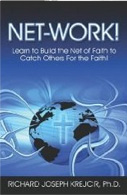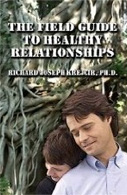"The Vision of Christ"
The image of Christ is breathtaking. It is not that of the humble servant, Son of man; now it is the immeasurable Sovereign of the universe standing in the heavens, holding the stars. He was blazing as radiantly as the sun with a voice that thundered as He held the Churches in His grip. John's only response was to fall face down as dead in total reverence and humility to Christ's Lordship. Christ, with His full mercy and grace, allows John to stand, gives him comfort, and gives him the important task of recoding His precepts. Verse 19 is interesting; it may set a tone for the meaning of Revelation, not necessary literally, but as imageries that have a meaning for a purpose that is for us now and will still be so in its culmination.
Vs. 9-11: In the Old Testament Tabernacle that Moses built and where the Jews first worshiped God, there was one lampstand with seven branches (in practice some Jews use six to nine branches, so not to duplicate anything that was in the Temple). This is now called the "menorah," a prime symbol of Judaism today and used in "Chanukah." This Menorah had seven branches that symbolized the assembly of believers and how God's light shines to us (Ex. 25:31-40; Isaiah 42:6; Zech. 4:1-6; Matt. 5:16; Phil. 2:14-16).
· Brother and companion. John is addressing all Christians¾not just the seven churches, because the seven means "completeness" and represents us all. John is making it personal and caring, yet forceful in function.
· Suffering is a prevailing theme in Revelation (Rev. 2:9-10, 22;
· Endurance is a call to remain faithful and keep our trust in Christ no matter what comes our way in sufferings or temptations. We are to focus on His Way, even in persecution and stress. This theme is prominent in Revelation (Rev. 2:2-3, 13, 19;
·
· The Lord's Day was a covert term to mean when the
· In the Spirit means "spiritual exaltation," possibly as in charismatic worship. However, John did not solicit this vision; God gave it to him. The Holy Spirit provided John the visions and took him to places he could actually see. Thus, he is recording authentic images he saw in reality; this was no dream (1 Chron. 25:1-6; Ezek. 2:2; 3:12-14, 24; 8:3; 11:1, 24; Acts 10:10; Rev. 4:2; 17:3; 21:10).
· Loud voice refers to the power of Christ and our duty to reverence Him (Job 37:5-6; Ezek.
· Trumpet means God is preparing to give a command or the pronouncement of His Word (Ex.
· Scroll means a piece of papyrus or parchment that is usually bound or sown together and rolled on a wood spindle, which codex's in the second century (books) replaced. It refers to the power and eminence of His Word.
· Send it to the seven churches, as the text says, at
· Seven churches. These are not allegories, but rather real, actual churches in
This passage also points us that it is God's power that leads¾not our ways or trends. The essential framework to build a healthy church is to understand that its prime purpose is to glorify Christ, not to please our comforts or ideas. We are to shine before Him by holding His truth, and shine for the Lord, making Him known in a dark world!
Vs. 12-20: This passage displays God's splendor in the best symbolic words and imagery available following Daniel chapter seven, where mere words are insufficient to convey who He is (Rev. 5:6; 14:14; 19:11-13). Obviously, this is a figurative, not a literal description of our Lord! Christ is shown as Supreme, and Head over the Church. He controls the Church. Does He control yours, or do you think you do (2 Cor. 3:18; Eph. 4:13-15; 5:23; Col. 1:15-20; 1 Tim. 3:1-7; Tit. 1:5-9)?
· Lampstands. The image that God is Light refers to the Church as the body of believers and whose duty it is to be a light as a witness for Christ. His character is the Light we follow and proclaim. Christ is the Priest, Head, Lord, and Prime Shepherd of the Church. He is the Object and Reason why we meet and function. This refers to the O.T. account of how God's Glory descended into the Tabernacle. Now, our purpose is to point to His glory, as the Church is the light of the world. Christ is the destiny and pattern we follow and emulate. Proclaiming the Church as a lamp stand is saying the Church is significant as the true place of reverence to God, and Christianity is the true practice of Judaism (Gen. 1:3; Ex. 25:31-40; 1 Kings 7:49; Zech. 4:2; Matt. 5:14-16; 18:20; 28:20; John 1:4-5; 8:12; 14:18; Acts 26:13; Eph. 1:10; 5:8-13; Phil. 2:15; 1 John 1:4-5; Rev. 2:9; 3:9).
· Like a son of man refers to His supremacy and role as Lord Ruler and Love for the believer (Dan. 7:9-13; 10:5-6; Ezek. 1:25-28; Mark 8:31; Col. 1:16-17).
· Robe means distinction. Christ appears in overwhelming brilliance and glory that was extremely difficult to put into words, as the world cannot contain His essence. The high priest was dressed in expensive, decorative, full-length girdles and robes. This alludes to Ezekiel and Daniel and portrays Christ as Judge and Ruler over all, especially the Church in which we think we rule (Ex. 28:4; 29:5; Ezek. 1:13, 25-28; Dan. 7:9-10; 10:5-6; Rev. 2:27; 3:21).
· Golden sash was a woven sash worn by priests. It refers to His Glory, Deity, and the victory and conquest over sin, and His guarantee of the final victory in the last days. It also refers to Christ being our High Priest. In context, this is also powerful Trinitarian imagery (Ex, 29:29; Rev. 1:17-18; 15:6;
· Like wool refers to age, wisdom, honor, respect, and dignity (Lev.
· Blazing fire means God's penetrating insight and strength, His Sovereignty as Warrior, and His role as victor in the final battle to come. It also refers to the great victories of battle in the O.T. This points to the Transfiguration (Ex. 15:3; Duet. 32: 41-42; Judges 5:31; Isa. 59:17-18; Zech. 14:3; Dan. 10:6; Matt. 13:43; 17:2; Rev. 4:6; 19:11-21).
· Bronze…feet means bearers of God's throne, and that God is irresistible and firm (Ezek. 1:7; Dan. 10:6)
· Seven stars. Jewish texts often display angels as stars. In contrast, pagans saw stars as the rulers of their destiny when, in fact, God, who is LORD is that ruler.
· Double-edged sword refers to the Roman "Thracian" sword that a small double edge dagger used as an offensive weapon, it is referring to the power of His Word and the testimony of our Lord. It symbolizes His divine judgment and decisive action (Isa.
· Sun. Angels are sometimes described as shining like the sun (Isa. 60:1-3, 19-20; Dan. 10:6; Rev. 21:22).
· Fell at his feet is an attitude and posture of great respect and awe. This can also mean the terror that was felt until the Angel touched and relieved them (Gen. 15:12; Deut. 3:2; Josh. 8:1; Jer. 1:8; Ezek. 1:28; 11:13; Dan. 8:18; 10:10; John 6:35; Rev. 4:10; 5:8; 7:11; 19:10; 22:8).
· I am the First and the Last is the same as the Alpha and Omega in verse eight. Christ is eternal and fully God in all areas, attributes, power, character, and sovereignty (Isa. 44:6; 48:12; Rev. 2:8;
· Living One refers to the resurrection and the triumphant Christ as the living God who gives us life, and then new life, renewal, and reason, and how He will renew the entire world. This is a contrast to paganism and the "gods" of wood and metal who are lifeless, careless, petty, and meaningless; our God is living and involved (Jos. 3:10; Psalm 42:2; 84:2; Isa. 41:4; 44:6; 48:12; Rev. 2:8; 5:9; 20:4-5; 22:1-2).
· Keys of death and Hades indicates that Christ is in absolute control over all domains and also points to His future role. Hades is the general realm of the dead; thus, Christ's power is all encompassing. Keys were a symbol of power and influence. The one who held the keys was the authority and the one in control. It is very encouraging to those who are facing death to know that Christ is there and in control, and can open those gates at any time, including at the last days (Psalm 9:13; Isa. 22:21-22; Matt. 16:18; Acts 2:27-31; Rev. 20:14).
· What is now and what will take place later indicates past, present, and future, and refers to what is in Revelation references. It is for the present and future as well as rooted in the past, but not completed as of this writing. This can also refer to Revelation being divided into three parts: past in chapter 1:12-16, present in chapters 2-3, and future in chapters 4-22. However, each section contains content of all three "then, now, and later," and does not necessarily refer to the entire structure of the Revelation (John
· The mystery does not mean something not understandable or hidden; rather, it is something known to God that He reveals to us in His good time. We cannot guess what we do not know; however, Christ does know. Here, John plainly tells us the meaning, just as Jesus did with the parable of the sower (1 Cor. 2:7; 2 Thess. 2:7).
· Angels, meaning "messengers," can mean people used by God to convey His message, such as pastors, or heavenly beings who live and work in Heaven. The context seems to indicate the latter. Or, it can mean the significance of the churches in Heaven, that they are spiritual entities. This can also mean the prevailing characterization of the theme and "spirit" of each church or a "guardian angel." In all practicality, it could refer to the seven different messengers John is sending with copies of his Epistle (Dan. 10:10-21; Matt. 18: 10; Luke
In the Upper Room, John reclined with Jesus for His last Supper and leaned on Him to show his devotion and love (John
The Preterist view sees this passage as meaning what will come about soon in their generation (as by 70AD) and has been fulfilled by the fall of Jerusalem and the destruction of the Temple, or the fall of Domitian, or the Roman Empire. They believe Christ has already come back in vengeance by destroying the
The Futurist view believes that John was literally carried into the future to see these events. They see this passage as being fulfilled at the end of the age, in the future just before the Second Coming.
The Idealist view sees this passage as symbolic with no specific reference to place or time, rather giving hope to the suffering and portraying that God is sovereign. They believe Christ is coming back continually and figuratively in judgment over history.
The Historicist view sees this passage as an enfolding fulfillment, as a template to the entire church age and many events to come that will be repeated until the Second Coming.
The Essential Inductive Questions (for more Inductive questions see Inductive Bible Study)
1. What does this passage say?
2. What does this passage mean?
3. What is God telling me?
4. How am I encouraged and strengthened?
5. Is there sin in my life for which confession and repentance is needed?
6. How can I be changed, so I can learn and grow?
7. What is in the way of these precepts affecting me? What is in the way of my listening to God?
8. How does this apply to me? What will I do about it?
9. What can I model and teach?
10. What does God want me to share with someone?
Additional Questions:
1. At this point, what would you say is the purpose of Revelation? Of the four main views on how to interpret Revelation, does any one of them appeal to you more than another?
2. How would you react if Christ appeared to you as He did with John in this passage? What can this attitude do to help you be more reverent to Christ in your daily life?
3. What does it mean to you and your faith that Jesus is the ultimate Priest, Judge, King, and Ruler of the Church?
4. Who is Christ in your life? How is He reverenced in your church? (Not so much in worship, but in the attitude of veneration in the leadership.) This would mean how Jesus is adored in the reality of relationships, attitudes, and daily functioning of how we are conducting our lives and church.
5. How does the fact that John is demonstrating humility help him build a connection with his people? What can you learn from his example? Keep in mind his status, eminence, and position in the Church. What would happen if he were arrogant, like a lot of church leaders today? Why was he not prideful?
6. How and why is it important for a leader to lead by example by going first to the destination to which they are leading others? Can someone lead effectively if they never been there before, such as teaching on character yet not having it?
7. Why do you suppose Jesus chose John to be the one to receive and write these revelations down?
8. What is the image of Christ to you in this passage? How does this give you more information so you can have a better, healthier concept of who God is? How can this translate into your daily life?
9. What does it mean to you to shine before God? How does holding His truth help you shine and make Him known in a dark world?
10. What is your understanding of verse 19? Do you think it may set a tone for the meaning of Revelation? If so, how so?
11. Why is it important that when we run our churches, we do so with God's power and precepts leading us and not our ways or trends? From this passage, what should be the essential framework to build your church into a healthier church?
12. What is the condition of your church? Does Jesus control your church or do you or others think they do? How is your light shining before others? Our Light is Christ and we are called to show Him in our lives and in our Church! How can you do this better?
Revelation 1: 9-20, Revelation, Loud voice, In the Spirit, The Lord's Day, Patmos, Endurance, Brother and companion, Chanukah, Temple, lampstand, menorah, lamp-stand, Tabernacle, Son of man, servant, image of Christ, John, connection, humility, reality, Priest, Judge, King, Ruler, Church, Vision of Christ, Christmassy, Historicist view, Idealist view, Futurist view, Preterist view, Blazing fire, Bronze, Seven stars, Thracian, Double-edged sword, Sun, Fell at his feet, I am the First and the Last, Living One, Hades, Keys of death, mystery, Angels, wool, Golden sash, Robe, splendor, Seven churches, Scroll, Trumpet, into thy word, bible study
© 2005 R. J. Krejcir Ph.D. Into Thy Word Ministries ww.intothyword.org













